#venus of dolní věstonice
Explore tagged Tumblr posts
Text

Njan has a lump of clay on a flat stone in front of him, and is making it into some kind of figurine. Twice has he already slammed the lump against the ground when it did not turn out the way he wanted to, and tried again a third time. This time he mixed in a handful of bone meal from mammoth bones. Plenty of these are lying around the hunters' tents, and he used them to make a small pile of powder on a hare skin. Burnt bones were easy to crush; Njan did not even need to strike them with a rock too much. A bison horn full of water lied next to him on the ground. The figurine about an inch tall has a human form: a head, a fat body, and two legs ending at the knees. Njan has merely hinted the arms, but he put a lot of effort into the torso. He works with a thin bone and carefully smooths the surface of the figurine; sometimes he softens it with water. He moulds a pair of large breasts. Now he just makes a small dimple for the belly button and two lines on the face for eyes - and it is done. It was just then that the young Kopčem arrived and watched his father's work with interest. Njan took the figurine in his hand, held it at an arm's length and looked at the finished product with satisfaction. "Mom!" cried out Kopčem. He recognized the recently departed Niana.
(Eduard Štorch, Lovci mamutů (Mammoth Hunters), published 1918, segment translated by me with minor adjustments for context)
#hello it's almost 5am and I am having feelings about a paleolithic figurine#archeology#paleolithic#venus of dolní věstonice#eduard štorch#lovci mamutů#čumblr#czech
124 notes
·
View notes
Text

The Venus of Dolní Věstonice is a Venus figurine of female figure dated to 29,000–25,000 BC. It was found at the Paleolithic site Dolní Věstonice in the Moravian basin south of Brno, in the base of Děvín Mountain in which is present-day Czech Republic.
Source: Ancient Library
#Ancient Library#ancientlibrary.com#The Venus of Dolní Věstonice#Venus figurine#female figure#ancestors alive!#what is remembered lives#memory & spirit of place#ancient ways#sacred ways#life#29000-25000 BC#Paleolithic site Dolni Věstonice#Dolní Věstonice#Moravian basin#Moravia#Brno#Děvín Mountain#Czech Republic#Goddess
7 notes
·
View notes
Text
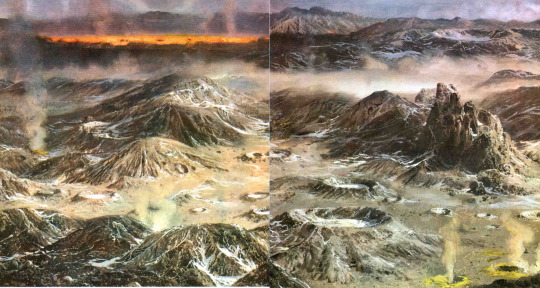
Archaean landscape

Cambrian seafloor with trilobites and jellyfish
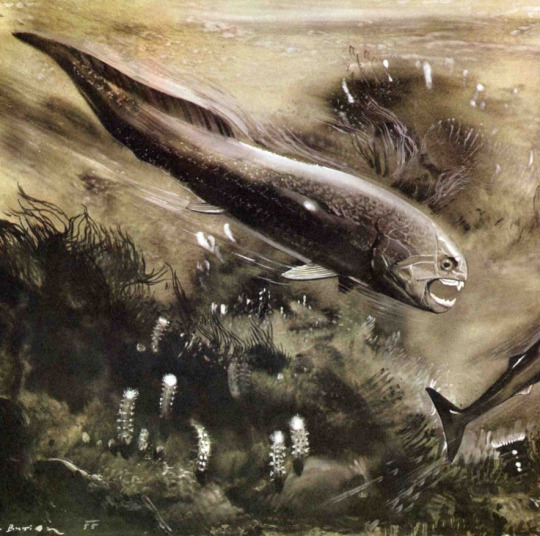
The giant placoderm Dunkleosteus, hunting (look how watery that seafloor is, I love it)

Storm blowing through a Carboniferous forest
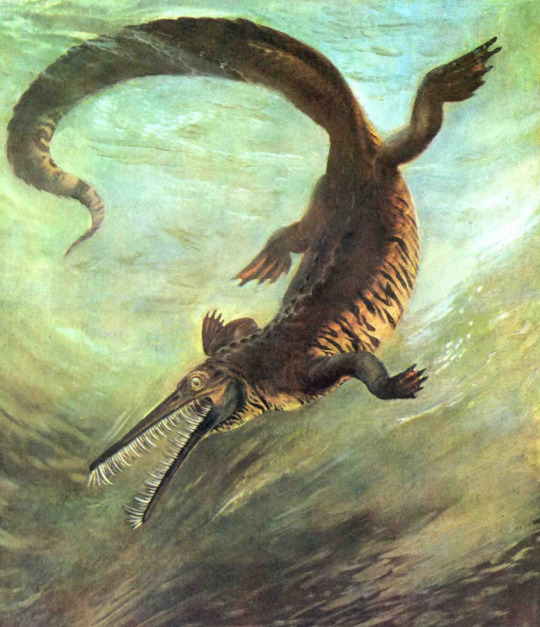
The early marine reptile Mesosaurus

The primitive ichthyosaur Mixosaurus
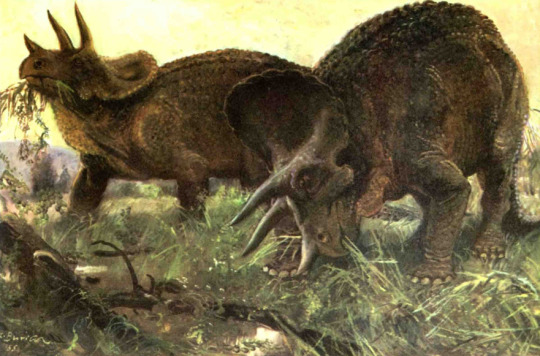
Triceratops grazing (beautiful, but a tad outdated reconstructions!)
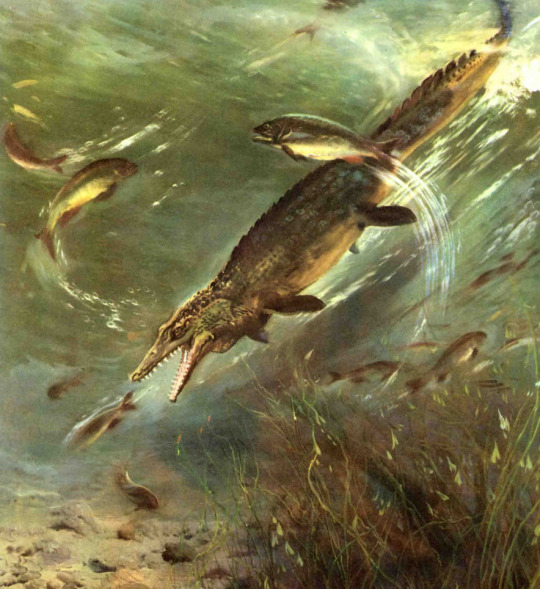
Mosasaurus -- the reconstruction is a bit more croc-like than it should, but that water! That motion!

The rhinoceros-kin Metamynodon, wallowing
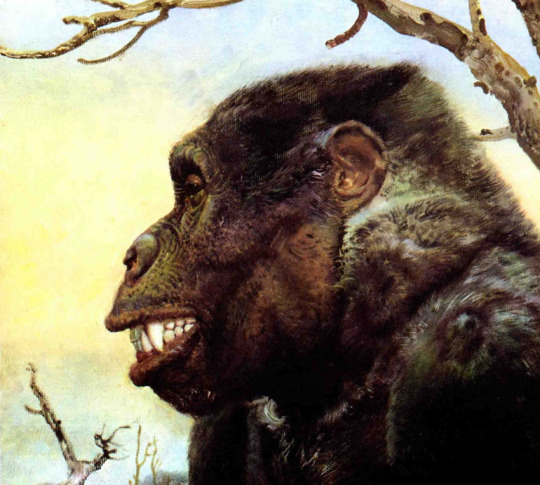
The early ape Dryopithecus

The great Eurasian forest during the Quaternary Ice Age
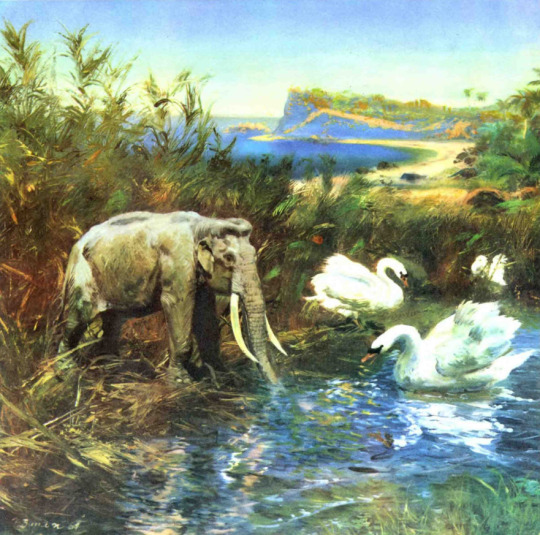
The Sicilian dwarf elephant Palaeoloxodon falconeri
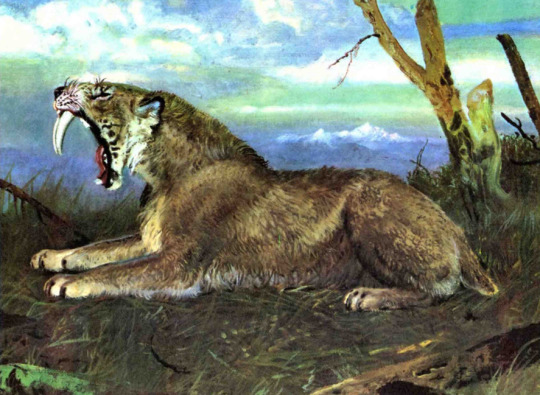
The South American sabertooth cat Smilodon
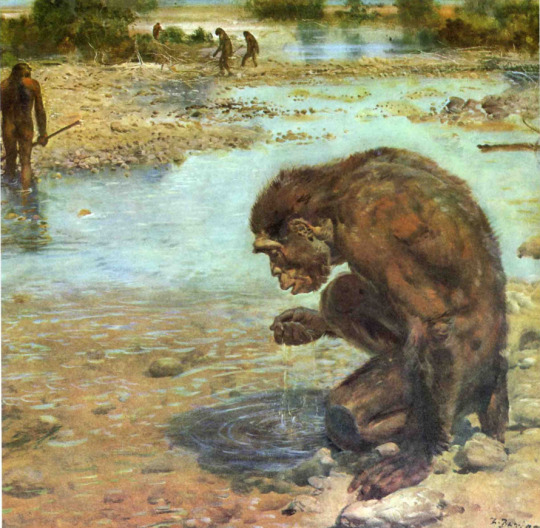
A hominid identified as Homo heidelbergensis (I would imagine it a bit more human-like)

Woolly mammoths, Mammuthus primigenius, digging for grass through the snow

Hunting Megaloceros

Making the Venus of Dolní Věstonice, about 27,000 years ago
* * *
Paleoart by the Czech painter Zdenek Burian (probably mostly painted between 1950 and 1975?), published in Zdeněk V. Špinar, Zdeněk Burian, Life Before Man, 1983
132 notes
·
View notes
Text
I went on a stone age art wikiwalk. come partake in some highlights with me
Çatalhöyük. Often called 'the world's first city' and located in current day Turkey. Here's a probable reconstruction of an interior of the houses:
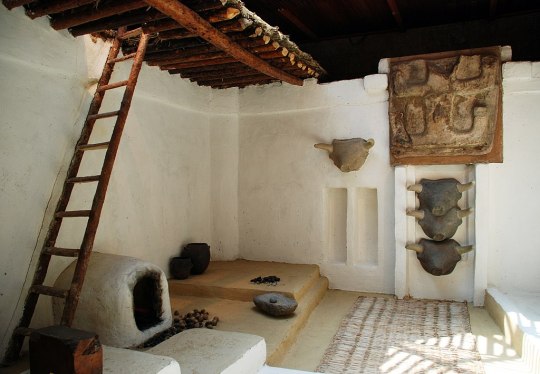
Seated Woman of Çatalhöyük. A figurine found in Çatalhöyük. Personal note: what the hell this art fucks so incredibly, look at that definition, those shapes!!

Venus of Dolní Věstonice, found in current day Czech Republic. It's dated to 29,000–25,000 BCE (!!!!) and is one of the oldest known ceramic pieces ever made.
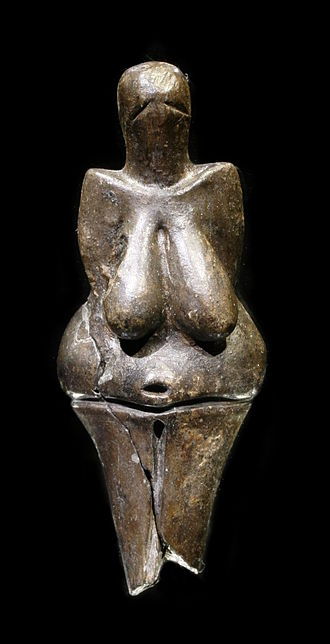
I don't know why this got to me as much as it did, but during a scan in 2004 they found the fingerprint of a child between 7-15 on this figurine -- they probably weren't the artist, but must have handled it at some point before it was fired. and somehow that gets me real emotional haha
Venus of Monruz. Found in current day Switzerland, likely about 11,000 years old, and of a profile I feel can only suitably be described as 'absolute dumptruck'. Mostly here for the ass enjoyers to balance out the representation of glorious boobage, if I'm being honest. Some similar figurines were found in Germany and at least one of them are theorized to be made by the same artist; I find this idea absolutely delightful because I love the idea that someone so obviously Knew What They Were About back then. (The actual function of Venus figurines, whether for ritualistic/religious purposes as fertility symbols, works of art, or good old fashioned tit(t)illation is uncertain and contentious (as is the use of 'Venus figurine' as a name for them, accordingly), but in my own humble and entirely unqualified opinion: somehow this one feels deeply horny. someone here was all about that base and didn't care who knew it.)
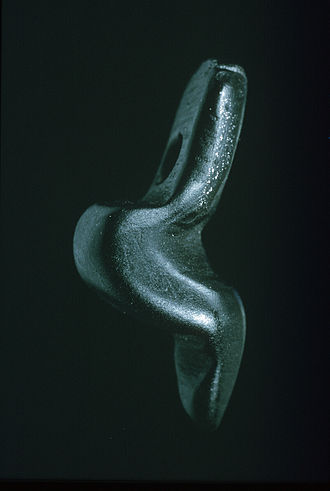
Venus of Hohle Fels Found in current day Germany, the oldest known clear depiction of a human being we know of, dated to 40,000 -- 30,000 years old. (The Löwenmensch figurine is likely older, but it's kind of unclear if that is meant to depict a human being or a god or what. My unprofessional personal opinion: Yes, that is right; the furries got there first, and I don't see why anyone's surprised fhsdfjak.)
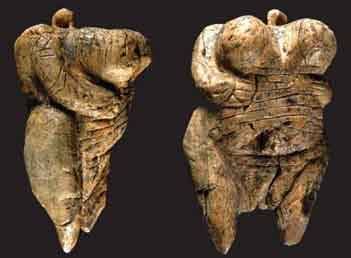
Several male anthropologists have said some deeply exuberantly weird and horny things about this one! It does somehow feel like I'm daring tumblr to strike me down even in the absence of female presenting nipples on display here (nevermind the 'more of a pussy out sort of look' of it all) so maybe they have a point, but I find this piece of art so deeply charming I'm ready to take the chance anyway. I adore the way the hands are rendered especially. I also cannot recommend enough that you go to the wikimedia section of this one, not least because I found THIS in there
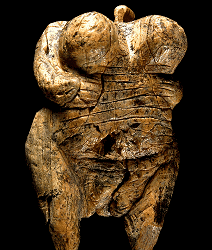
the power of transformative art. the anime titty jiggle of our modern day applied to the oldest known human figure. art begets art across the ages
Not a piece of art as such, but the the Neanderthal skeletons found in the Shanidar Cave in the Kurdistan region of northern Iraq fascinate me. Lots of interesting speculation about the possible presence of altruism in Neanderthals brought up from this. Special shoutout to the body known as Shanidar 3: a male person who was between 40 and 50 at the time of his death, and who may have been the first guy we know of to have been stabbed to death by someone. what a claim to fame. Caesar may have done it the most but this guy did it first
This little guy

I can't stop laughing. yes that is exactly how I feel too, trace of French cave art possibly depicting a cave hyena from Le Babiliou Cave, Dordogne, France. You're saying what we're all thinking
#I also went through a fun little hike through some articles on homosexual pair bonded animals and such it was that kind of day lol#art nonsense#ngl I mostly made this post to get to share the possibly-hyena one. it despondently said :/ and I'm so there with it#there were also a bunch of amazing cave paintings from all over the world but I am tired. and sad. so mostly you get boobs&ass jokes today
23 notes
·
View notes
Text
The article is “Fingerprint on the Venus of Dolní Věstonice I” by Miroslav Králík, Vladimír Novotný and Martin Oliva if anyone is interested!
Yesterday I almost cried because my baby cousin ran up to my grandmother and was like. “Ha! Buhbuh ba ha.” And she said okay you want to show me something? And he led her over to the garden patch and crouched down and pointed at rocks and plants and was like. “Ah. Habah ba ah” as she listened attentively.
And I was like that happened 1,000 years ago. Probably 10,000 years ago. Maybe 100,000. The youngest human in a group went to the oldest one and said to the best of their ability “come see.” And the adult went.
93K notes
·
View notes
Text
The History of Ceramics: From Ancient Art to Modern Craft
Ceramics, one of humanity's oldest and most enduring art forms, has evolved significantly from its ancient origins to contemporary practices. This article will explore the rich history of ceramics, highlighting key developments, techniques, and cultural significance, all while showcasing some of the best ceramic products available today.
Ancient Beginnings
The story of ceramics dates back to around 29,000 BC, with the discovery of the Venus of Dolní Věstonice, one of the earliest known ceramic figurines. Early humans used clay to create functional items such as pots and bowls, which were essential for storing food and cooking. These ancient artisans employed primitive firing techniques to harden clay, leading to the development of the first ceramic wares.
The Rise of Pottery
As civilizations progressed, pottery became an integral part of cultural identity. In ancient Mesopotamia, Egyptians, and Chinese societies, ceramics evolved into more sophisticated forms, with intricate designs and advanced glazing techniques. The invention of the potter's wheel around 3,500 BC revolutionized pottery-making, allowing for greater uniformity and creativity in design.
Ceramics in Different Cultures
Throughout history, various cultures have developed their unique styles of ceramics. For instance, the delicate porcelain of China became highly sought after, influencing global trade. In Europe, the Renaissance saw a resurgence of interest in ceramic art, leading to the creation of beautiful Delftware in the Netherlands and Majolica in Italy.
Modern Innovations
The Industrial Revolution brought about significant changes in ceramic production, introducing mass production techniques that made ceramic products more accessible. Today, artisans continue to push the boundaries of ceramic art, exploring new materials, glazing methods, and artistic expressions.
The Best Ceramic Products Today
In the modern era, the market is flooded with best ceramic products that blend traditional craftsmanship with contemporary design. From functional dinnerware to striking decorative pieces, these ceramics reflect both artistry and utility. Consumers are increasingly drawn to unique, handcrafted items that tell a story and enhance their living spaces.
Conclusion
The history of ceramics is a testament to human creativity and innovation. From ancient functional pottery to the best ceramic products of today, this art form continues to thrive, offering endless possibilities for artistic expression and practical use. Embracing the rich legacy of ceramics can inspire us to appreciate the craftsmanship behind each piece, making our everyday lives more beautiful.
This outline incorporates the theme of the history of ceramics while effectively integrating the keyword "best ceramic products." If you need further elaboration on any section or additional details, feel free to ask!
0 notes
Text
Oldest known artifacts made by humans
STONE TOOLS
The oldest known artifacts discovered by humans are stone tools, some of which date back to around 3.3 million years ago. These tools were discovered in the Lomekwi 3 site in Kenya and are believed to have been used by early hominins.

OLDEST KNOW CERAMIC ARTIFACT
The oldest known ceramic artifact is dated as early as 28,000 BCE (BCE = Before Common Era), during the late Paleolithic period. It is a statuette of a woman, named the Venus of Dolní Věstonice, from a small prehistoric settlement near Brno, in the Czech Republic.

WORLD'S OLDERS CERAMIC POTS

0 notes
Text
youtube
Making a clay female figure from clay I dug from our yard years ago.
Making a clay female figure from clay I dug from our yard years ago.
I wanted to make a clay female figure to remind myself of my own beauty and to help cultivate body positivity and not compare myself to others.
Venus figures Venus of Willendorf Venus of Willendorf found in a village in Willendorf Lower Austria. https://en.wikipedia.org/wiki/Venus_o...
Venus of Brassempouy Venus of Brassempouy found in a cave at Brassempouy, France. https://en.wikipedia.org/wiki/Venus_o...
Other Venus figures include , Venus of Lespugue , Venus of Dolní Věstonice , Venus of Monruz and more .
#clay#art#artist#clay art#female#female body positivity#body positive#body posititivity#clay female figure#art vlog#youtube#claymaking#Youtube
0 notes
Photo

Estatueta antropomorfa feminina conhecida como "Vênus de Dolní Věstonice". Feita em terracota. Datada entre 29.000 e 25.000 AEC. Período Gravetense. Encontrada no sitio arqueológico de Dolní Věstonice. Morávia, República Tcheca.
Saiba mais sobre a problemática da designação desse tipo de estatueta como “Vênus” no artigo que traduzi - Elas não são figuras de “Vênus” - https://angelanatel.wordpress.com/2020/07/25/elas-nao-sao-figuras-de-venus/
Se você deseja explicação, orientação, recomendações bibliográficas personalizadas ou aulas específicas, entre em contato pelo e-mail [email protected] e solicite um orçamento.
Terei prazer em atender, esse é o meu trabalho.
Não atendo através de minhas redes sociais. Valorize o trabalho de professores.
Hora/aula - R$ 100,00
Pacote de 4 horas/aula - R$ 300,00
FORMAS DE PAGAMENTO:
1. Pix: [email protected]
2. PicPay: @angelanatel
3. Mercado Pago: link.mercadopago.com.br/angelanatel (nesse caso acrescentando 5 reais ao valor total)
4. PayPal - [email protected] (nesse caso acrescentando 7 reais ao valor total)
5. PagSeguro:
1 hora/aula - https://pag.ae/7YYLCQ99u
Pacote de 4 horas/aula - https://pag.ae/7YYLEGWG8
Sobre mim e meu trabalho: https://linktr.ee/angelanatel
0 notes
Photo
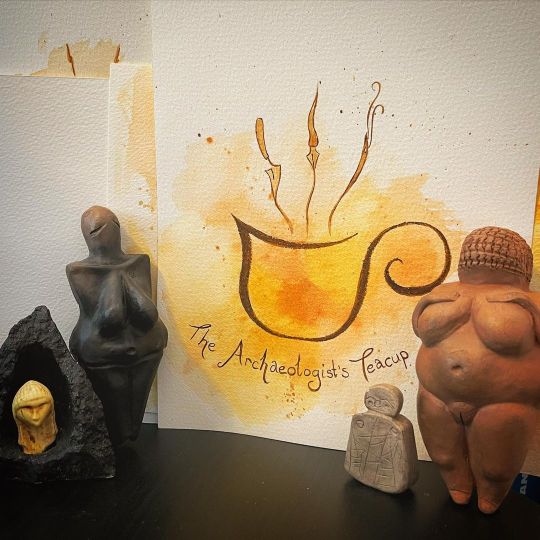
Happy International Women's Day! . Some of the most well known women from the past are the famous "Venus Figurines" that are found all over the world from as far back as the Paleolithic. The exact significance of these figurines is still a matter of discussion, as is the appropriateness of the name itself, and whether all of these beautifully diverse figurines should be lumped into one typological category. . If you're interested in learning more about those figurines depicted in this post, check out the past #TeaDay reels (also shared in stories!). Left to right: Venus of Brassempouy, Venus of Dolní Věstonice, Orkney Venus, Venus of Willendorf. . What's your favourite (pre)historic depiction of women? . #InternationalWomensDay #VenusFigurine #Venus #VenusOfWillendorf #VenusOfDolniVestonice #WestrayWife #OrkneyVenus #WomenOfPrehistory #WomenOfThePast #FemalePower #archaeologist #ArchaeologyLovers #ArchaeologyLife #prehistoric #prehistory #ArchaeologistsOfInstagram https://www.instagram.com/p/Cph3W4aqq_k/?igshid=NGJjMDIxMWI=
#teaday#internationalwomensday#venusfigurine#venus#venusofwillendorf#venusofdolnivestonice#westraywife#orkneyvenus#womenofprehistory#womenofthepast#femalepower#archaeologist#archaeologylovers#archaeologylife#prehistoric#prehistory#archaeologistsofinstagram
0 notes
Photo
Venus of Dolní Věstonice, ceramic, 29,000–25,000 BCE






Karel Absolon – Scientist of the Day
Karel Absolon, a Czech archaeologist, was born June 16, 1877.
read more…
12 notes
·
View notes
Text
Kinda wild to think that the oldest known ceramic figurine in the entire world was discovered in the village neighboring my grandma's
30 notes
·
View notes
Photo




figuras de Vênus (Dolni Vestonice, Malta, Willendorf, Lespuge), 2020
Pintura digital feita através do Photoshop CC.
Nota: Reprodução pensando na importância e nas funções da Grande Mãe no inconsciente coletivo com seu caráter simbólico e mágico.
#arte digital#fuckaneurysming#portfoliomaiamero#mtc#artists on tumblr#venus#Venus of Willendorf#paleolithic goddess#venus figurines#Venus of Dolní Věstonice#Venus of Lespugue#Venus of Malta
1 note
·
View note
Photo

Venus of Dolní Věstonice [Credit: Petr Novák, Wikipedia]
(via Archaeology News Network)
48 notes
·
View notes
Photo

Venus von Dolní Věstonice
Die Figur gehört zu den ältesten keramischen Erzeugnissen und besteht aus Lösslehm, der zur Vermeidung von Schrumpfungsrissen mit Tierknochenmehl gemagert wurde.
11,1 cm hoch, 4,3 cm breit und 2,7 cm dick
28,000 - 24,000 B.C
#oracular#Venus von Dolní Věstonice#Dolní Věstonic#Venus#Object#ceramics#prehistoric#oracular object#clay#lehm#czech republic
88 notes
·
View notes
Text
I was trying to talk about the game PlateUp! and why I don't like baked beans when I checked a number on Wikipedia and found this lovely lady.

This is the Venus of Dolní Věstonice, and it's 27,000-31,000 years old. It was found in Czechia.
And that age is breaking my brain. It was twenty millenia before we domesticated cats. We wouldn't be able to write about this figure for 24,000 years, since writing didn't exist.
Stonehenge and the Pyramids were built closer to today than they were to this figure, and it's not even close. It's closer to now by a LOT.
It's called a "Venus" because of the trend of Paleolithic art showing women with exaggerated features, named after a Roman God from, you know, 26 thousand years later.
BTW one theory for why these figure look like this is that they are self-portraits by women who were looking down at their own bodies. This makes sense because mirrors are only 8000 years old and this figure predates them by a couple decade-milleniums.
This figure is so old that if we're currently on the night of December 31st and it was made on January 1st, Jesus was born on December 7th. The moon landing was earlier today. We didn't invent writing until late October.
Humans have been humans, just humaning along, for so fucking long.
298 notes
·
View notes